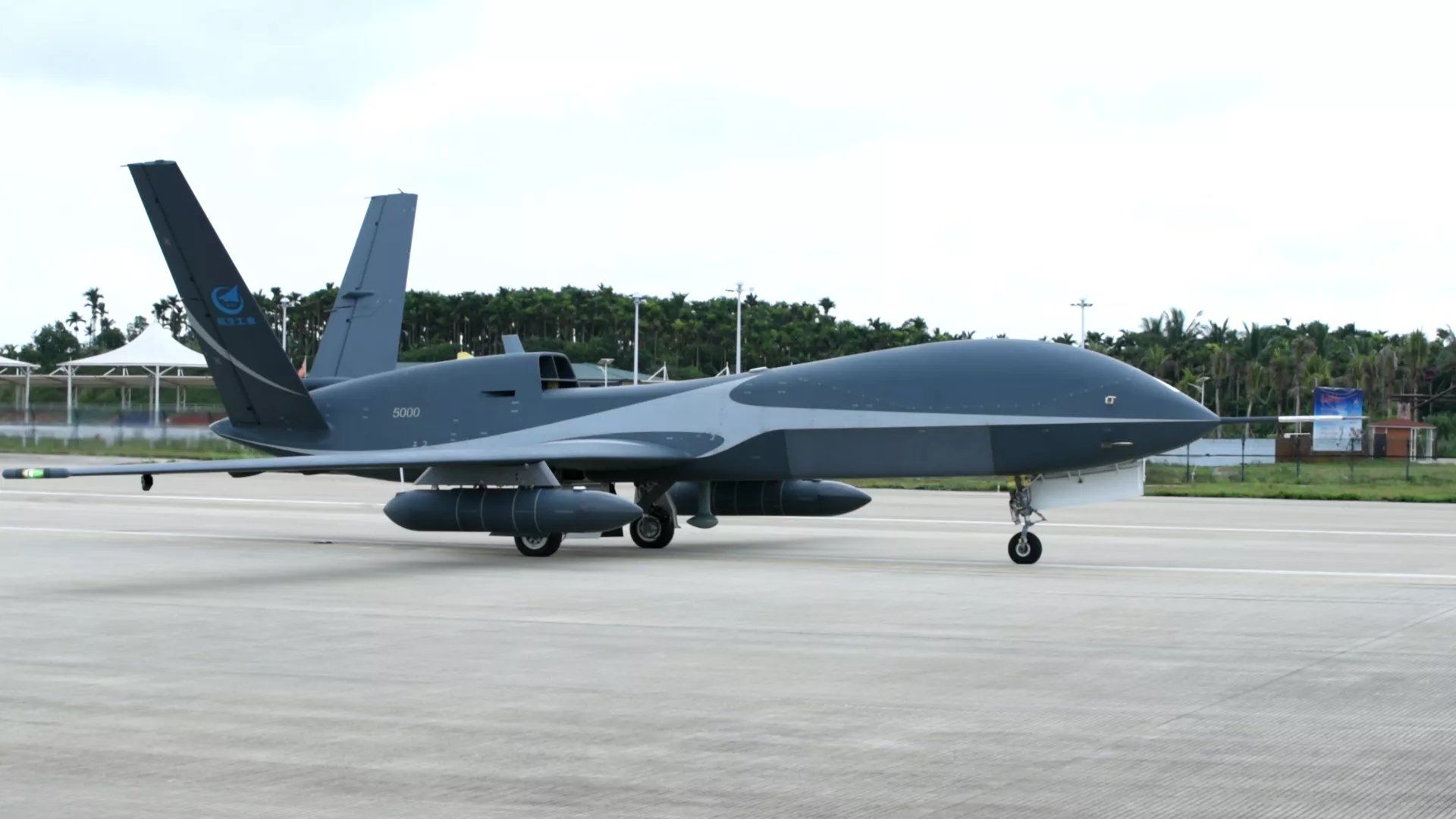A video of a ground control station view (or console) of a massive swarm of loitering munitions by a Chinese company has triggered speculation as to whether China has completely mastered autonomous UAV technology.
CH-901 UAV
China has grasped the technology to practically use a drone swarm, a concept featuring the simultaneous and coordinated operation of a large number of drones that could prove to be very difficult to defend against, a Chinese arms firm recently demonstrated in tests. https://t.co/Pj28DiSNya pic.twitter.com/lmgL1BjqIl— Massimo Frantarelli (@MrFrantarelli) December 26, 2022
In September 2020, the China Academy of Electronics and Information Technology (CAEIT) released a video of the same system. It showed three drones being launched from a box array of 48 tubular launchers from the back of a Dongfeng Mengshi vehicle.
CAEIT is a subsidiary research organization under the China Electronics Technology Corporation (CETC). In the video, a helicopter launches two more drones by dropping cylinders arrested by a parachute and releasing the drones.
All then form a swarm of around 11 kamikazes (suicide drones or loitering munitions) that hit marked ground targets.
While the drones are similar to the CH-901 drones unveiled in 2017, it is unclear if the latest video is of the same platform. CH-901 has a launch weight of nine kilograms.
According to information on Chinese social media pages, the onboard camera can detect objects at a distance of up to two kilometers.
The length of the loitering ammunition is 1.2 meters, and the maximum flight duration, depending on the weight of the payload, is from 40 minutes to 2 hours. It can fly from 100 meters to 1.5-kilometer altitude, while the operator control range is 10 kilometers.
Is Full Swarm Technology Capable?
Experts don’t believe the system or the video represents a quantum leap in drone technology, except that China merely possesses the diversity of operationalized platforms of such nature.
The mere techno-industrial capability has a military advantage as it allows churning out weapons in times of long-drawn-out wars.
The latest video by CETC only shows the tactical armored vehicle traveling from left to right with the open array at the back, facing away. It then cuts to a screen showing several dots and markers with digitized trail marks moving in a pattern, like a swarm.
It appears that it is replicating the movement of the drones on the screen, or the drones’ flight paths and trajectories are being pre-programmed.
However, like the September 2020 video, there is no corresponding recording of the actual drones themselves or a video feed from their nose cameras that should be expected to mimic the patterns on the screen – or vice versa.
David Shank, a US-based integrated air and missile defense and counter-drone expert, seems to allude to this inconsistency.
“Controlling large swarms has been a prevalent technology for ten years and isn’t unique. To me, this video displays a computer exercise and simulation and nothing conclusive on capability,” Shank told EurAsian Times. Shank doesn’t dismiss the threat posed by drone swarms but clarifies it is only those operated by machine-to-machine (M2M) controls or artificial intelligence (AI) that “present the greatest challenge to defend against.”
Shank’s explanation cannot be dismissed. The company would have included that bit in the video if China had attained complete autonomous drone swarm control, especially in this latest system.
For a country that publicizes key technological achievements amid a Great Power Contest with the US, primarily through visual media, highlighting only a part of a claimed breakthrough raises doubts. It gives credence to the conclusion that the video serves more public relations (PR), information warfare (IW), and propaganda purposes.

China Still A Drone Power
China has an admitted lead in drone technology, evident in its possession of the world’s most diverse range of attack, surveillance, and logistics drones. This is not to mention the world’s leading private recreational drone maker is a Chinese firm, DJI, whose readily available products in the commercial markets are being used by Russia and Ukraine alike for basic battlefield tasks.
Moreover, in May this year, scientists of Zhejiang University released a video of 10 drones, part of a swarm navigating through a thick bamboo forest in a fully autonomous mode. While reports did quote the team agreeing that the technology needed maturing, developing an “intelligent algorithm” was attributed to the system’s success.
China’s cutting-edge computing and sensor technology development has come from its civilian research institutions. There is no reason to believe they cannot be obligated to share their discoveries with the military – which has a robust research and development setup with dozens of military technology institutes.
EurAsian Times has reported concept videos of the People’s Liberation Army (PLA) using drone swarms to attack enemy positions in a Ladakh-like terrain, part of a coordinated combined arms strikes. Similar systems have also been displayed at the recently concluded Zhuhai Air Show, indicating they have been inducted.
Conclusion
Even without complete autonomous control, adequately networked drone swarms, backed by a credible electronic warfare (EW) capability, can devastate enemy positions and morale.
Swarms are incredibly hard to defend against since being networked, semi-autonomous, and upon receiving target location/data and mission parameters, can render even the best Very Short-Range Air Defense (V/SHORAD) or Quick-Reaction Surface-to-Air (QR-SAM) ineffective.
Russia’s Geran-2 drones, based on Iran’s essentially cheap and moderately advanced Shahed series of kamikaze UAVs, wreaked havoc on Ukrainian targets in its cities. Even advanced MANPADs missed it in straight-line shots!
Even if current AD systems can tackle swarms, they will still be saturated with having to engage dozens of targets and only take down a few.
The remaining will be available to overwhelm and destroy enemy AD positions, clearing the way for larger aircraft. In the final analysis, this particular drone system’s achievement can be considered exaggerated but not China’s overall advancement.
- The author can be reached at satamp@gmail.com
- Follow EurAsian Times on Google News




